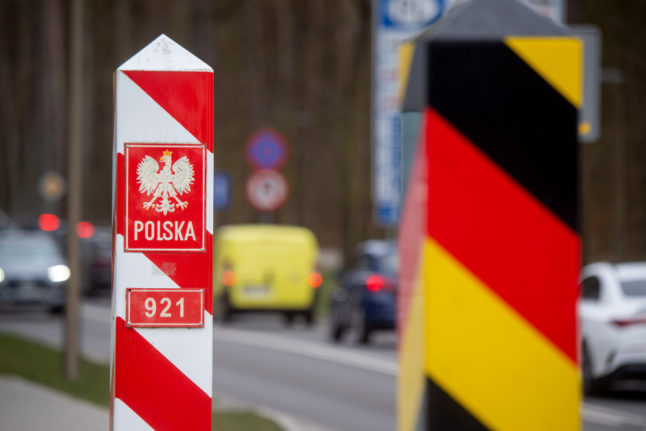In the debate on how to deal with rising refugee numbers and ease pressure on local authorities, Federal Minister of the Interior Nancy Faeser (SPD) gave a strong “Nein” when asked about whether there would be permanently stationed border controls along the German-Polish border.
However, Germany is set to deploy “several hundred” more police officers there in the near future, Faeser announced during a visit to the Polish border town of Świecko.
READ ALSO: Will Germany introduce tighter border controls?
This step would help stymie the influx of unchecked migration more than stationary border controls, she said, adding that the close relationship between Germany and Poland would be “massively disrupted” by such controls.
At the border with the Czech Republic, high migration figures have been reduced in recent months through a greater police presence, rather than stationary border controls such as those which already exist in Austria, said Faeser.
Call for stricter controls
However, politicians from the centre-right CDU, including the interior ministers of Brandenburg and Saxony, Michael Stübgen and Armin Schuster, had recently called for firm controls at the border with Poland, pointing out the high influx of asylum seekers coming into their respective states from the neighbouring country.
According to a spokesman for the coordinator of the Polish intelligence services, Stanislaw Zaryn, Poland’s Border Guard has recorded more than 10,000 attempted ‘irregular’ border crossings at the border with Belarus since the beginning of the year and many who cross in such a way continue on to Germany.
By comparison, 15,700 such attempts were registered in all of 2022. On Monday alone, Poland’s border guards registered 67 attempted border crossings.
According to data from the European statistics authority last week, more than 40 percent more initial applications for asylum were filed in the European Union (EU) at the beginning of the year than a year ago.
In Germany, the Federal Office for Migration and Refugees (BAMF) registered 110,516 asylum applications in the first four months of the year, or 78 percent more than in the previous year. Most of the applicants came from Syria and Afghanistan.
READ ALSO: Germany sees spike in asylum applications from Russian citizens
At the refugee summit on May 10th, the federal and state governments agreed to introduce stationary controls like those at the border with Austria, and at other German borders with neighbouring countries “depending on the situation”.
Regional leaders have long been demanding more help and money to cope with the new arrivals, with many being forced to build temporary shelters.



 Please whitelist us to continue reading.
Please whitelist us to continue reading.
Member comments